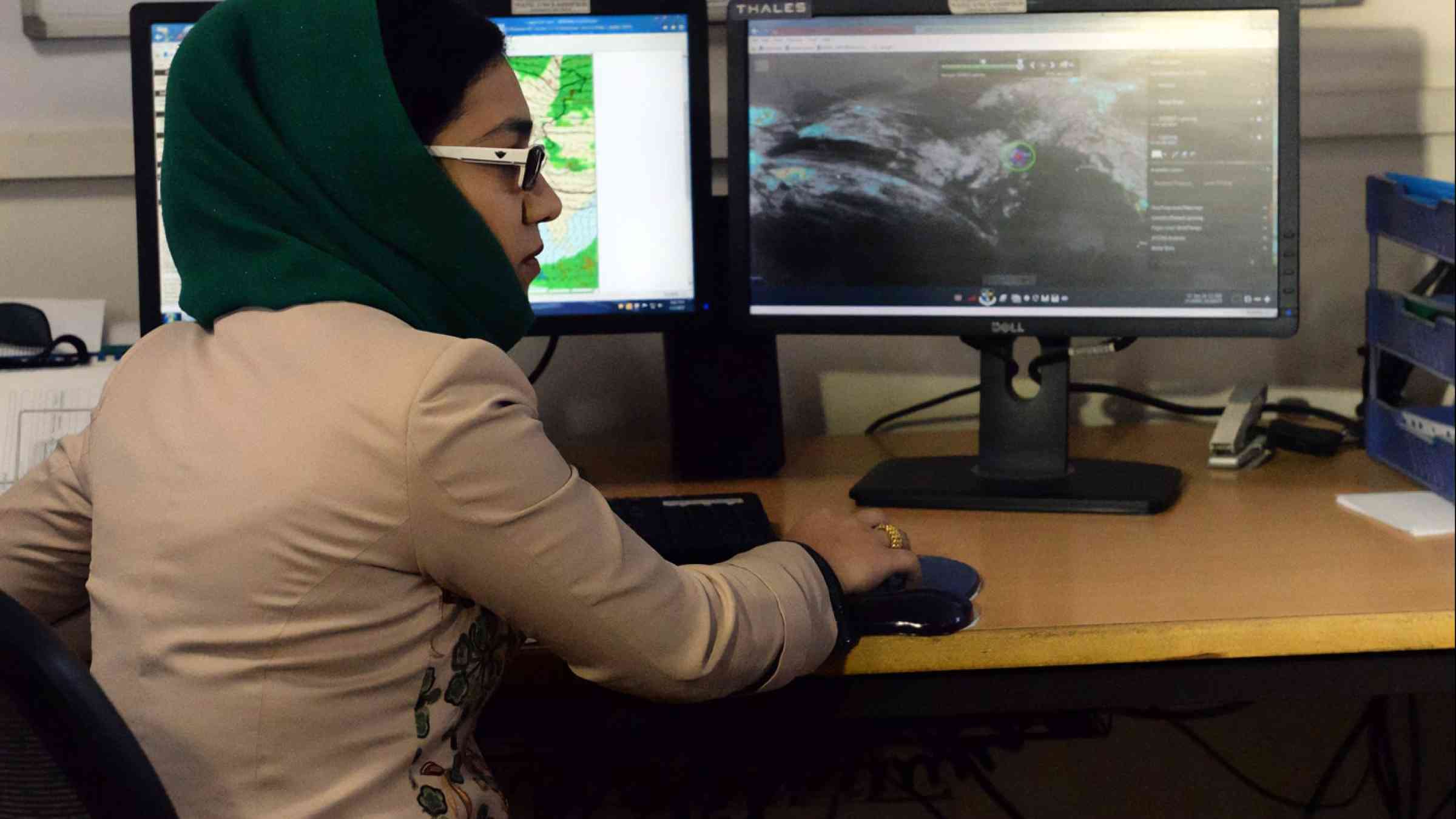Well-designed triggers support decision-making for anticipatory action

Increasing calls to scale up early action, based on early warnings, signal a paradigm shift towards a new era of proactive humanitarian action.
With advances in science and technology, we now have a much better idea of when and where a climate-related disaster (like a flood or cyclone) is likely to happen, and what its impact could be. With such information and awareness, we are able to plan and take action before impacts are felt by those most at risk. This approach, which we call anticipatory action, is defined by three pillars:
- The trigger - A forecast that leads to the initiation of predefined actions. All anticipatory action mechanisms will include a trigger mechanism that will translate the expected hazard event (such as a drought or cyclone) and its potential impacts (such as food security or livestock loss) into technical and actionable interventions. Climate forecasts that exceed pre-agreed danger levels and probability thresholds initiate the launch of predefined early actions, and to release the necessary resources to take early action.
- Early action - A set of predefined activities, initiated by the trigger alert, to mitigate or prevent negative impacts of the anticipated event. These actions are taken before impact. Actions may include the provision of cash and voucher assistance, WASH, evacuation, the reinforcement of shelters and other interventions to save lives and livelihoods, and improve resilience.
- Financing - An ex-ante mechanism that is available to support the implementation of the predefined early actions. This ring-fenced funding is released when the triggers are reached. Within the Red Cross, this funding is available through the FbA by the DREF. Other major humanitarian agencies engaged in anticipatory action have similar funds: the UN’s CERF fund and the Start Network’s Start Fund are two examples.
Within the Red Cross Movement, these three pillars are reflected in an Early Action Protocol (EAP), a formal document that shows the defined triggers and where early actions will be implemented, and clarifies the roles and responsibilities of various stakeholders.
How are triggers developed?
The development of a trigger mechanism relies on a detailed risk analysis of relevant hazards, including impact assessments of past disaster events and analysis of exposure and vulnerability indicators. A trigger mechanism is developed according to an impact-based forecasting (IBF) approach [1] that determines where the impact of an extreme weather event is anticipated to be most severe, and then helps define priority areas for action. While the process may vary between organisations and contexts, the following steps help illustrate the process of developing a trigger mechanism:
-
Conduct risk analysis to understand the expected impacts of hazard shocks.
-
Select hazards and analyse their historical impacts.
-
Conduct an exposure analysis to see who or what is likely to be impacted in line with IBF logic.
-
Identify vulnerability indicators to help prioritize geographic areas, communities, and households most likely to be impacted by the selected hazard.
-
Create an inventory of forecasts to select the best-suited forecast to trigger action based on verification, lead time, type, and reliability.
-
Define hazard magnitudes and calculate a return period. The provision of funding for early actions depends on the significance of humanitarian impact, so the return period is needed to provide a probability of an extreme event happening in a given year.
-
Analyse links between hazard magnitude and impact, in order to establish the expected impact and vulnerabilities. Also known as the impact-hazard curve or vulnerability function, this analysis is conducted using some combination of expert knowledge, elementary modelling, and statistical modelling.
-
Create an intervention map by combining vulnerability and exposure information with forecast data to identify the targeted areas for early action intervention
The trigger database
The Anticipation Hub, which brings together academic and practitioner expertise on anticipatory action from around the globe, has developed a trigger database as a point of comparison and inspiration for established practitioners and newcomers alike. This database collects information on existing trigger mechanisms: forecast sources, lead times, risk indicators, stop mechanisms, and return periods. The trigger database is designed to complement the Hub’s other two databases - the evidence database, which presents the results of anticipatory action projects, and the early action database, which describes the types of advance actions that have been included in projects.
Identifying and setting up triggers is a technical task, requiring cooperation among key actors and institutions, and expert resources. As anticipatory action gains steam, the Anticipation Hub will continue to contribute to the shift in the humanitarian model by providing and collecting evidence of early action in practice, which is why the continued support of the database is helpful to the development of future trigger mechanisms. We invite all involved in anticipatory action projects to learn from the experiences of others, and to contribute by adding your own experiences.
Notes
[1] Impact-based forecasting (IBF) looks beyond what future weather events will be, to provide information on at what they will do, representing a move from analysis based on observations to one based on impacts. IBF allows decision-makers to determine where and when the early actions should take place and who and what is most likely to be impacted based on evidence rather than subjective information. This can also help communities understand what is going to happen and what precautionary and preparedness measures they should take.
Irene Amuron is the Program Manager for Anticipatory Action at the Red Cross Red Crescent Climate Centre, and the co-ordinator of the Anticipation Hub’s Trigger Database.
Joanna Smith is a researcher at the Red Cross Red Crescent Climate Centre and a specialist in international humanitarian action.
Editors' recommendations
- Understanding disaster risk: anticipatory action
- Seven reasons to act early, before a hazard turns into a disaster
- The trigger database is live!
- Early action gets a boost with launch of new Anticipation Hub
- Forecast-based Financing and early action for droughts: guidance notes
- Learning and improving: An evidence base for anticipatory action